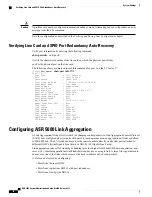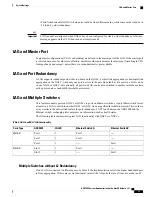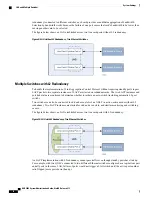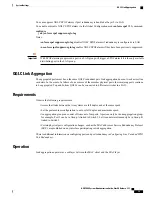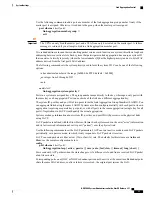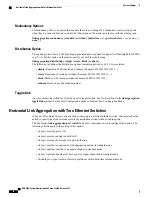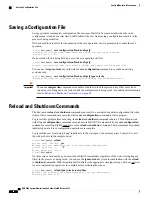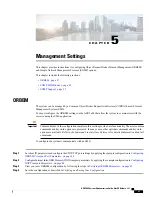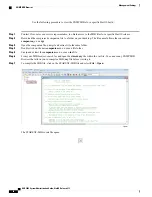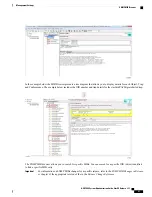
Each MAC passes received frames up for control or collection in an aggregator
—
a logical MAC that aggregates
several links together. The MAC client sends frames to the aggregator for distribution among MACs, as
follows:
Figure 11: QGLC Link Aggregation Traffic Flow
The aggregator and each MAC share the same MAC address, which means the MAC has no need to parse
two different unicast MAC addresses.
Frame distribution uses an algorithm to distribute frames among MACs that prevents both the mis-ordering
of frames belonging to the same "conversation," and frame duplication.
XGLC Link Aggregation
Because the XGLC is a full-height card that requires top and bottom card slots, link aggregation takes place
horizontally within ports on different XGLCs.
Link Aggregation Control
One port in an aggregation group is configured as a master so that all traffic (except control traffic) in the
aggregation group logically passes through this port. It is recommended (although not required) that you set
up the master first by managing card/slot/ports, and unset last.
The following command creates link aggregation group
N
with port
slot#/port#
as master. Only one master
port is allowed for a group.
N
must be in the range of [1...1023].
configure
port ethernet slot#/port#
link-aggregation master group N
exit
Link Aggregation Control Protocol (LACP) starts running only when the master port is enabled.
Important
ASR 5000 System Administration Guide, StarOS Release 21.1
76
System Settings
XGLC Link Aggregation
Summary of Contents for ASR 5000
Page 26: ...ASR 5000 System Administration Guide StarOS Release 21 1 xxvi Contents ...
Page 316: ...ASR 5000 System Administration Guide StarOS Release 21 1 288 VLANs VLAN Related CLI Commands ...
Page 400: ...ASR 5000 System Administration Guide StarOS Release 21 1 372 Engineering Rules ECMP Groups ...









